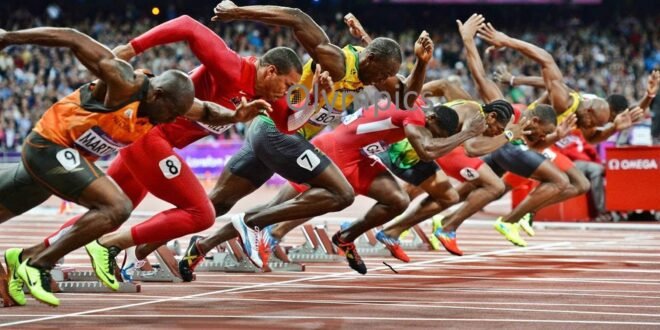As of my last knowledge update in September 2021, Is Bowling A Sport In The Olympics bowling was not included as an official sport in the Summer Olympics. However, I can provide you with an extended explanation about the status of bowling in the Olympics up to that point.
Bowling is a popular recreational and competitive activity enjoyed by millions of people around the world. While it has not been included in the Summer Olympics, it has been a topic of discussion and interest within the international sports community. Is Bowling A Sport In The Olympics Here, I will provide you with an overview of the history of bowling’s association with the Olympics, the reasons for its absence, and some considerations regarding its potential inclusion in the future.
History of Bowling and the Olympics:
Bowling has a rich history, with its origins dating back thousands of years. Is Bowling A Sport In The Olympics It is widely regarded as one of the oldest sports in human history. While bowling has a strong following in many countries, its relationship with the Olympics has been somewhat complicated.
Demonstration Sport: Bowling has been featured as a demonstration sport in the Olympic Games on a few occasions. A demonstration sport is a sport that is included in the Olympics to showcase it to the world, but it is not part of the official medal tally. Bowling was a demonstration sport in the 1936 Summer Olympics held in Berlin, Germany.
Campaigns for Inclusion: Various organizations, including the World Bowling Congress (formerly known as the FIQ – Fédération Internationale des Quilleurs), have campaigned for the inclusion of bowling in the Olympic program. Advocates for its inclusion argue that it is a sport with a global following and a competitive structure that meets Olympic standards.
Reasons for Bowling’s Absence:
Several factors have contributed to bowling’s absence from the official Olympic program:
Competition for Spots: Is Bowling A Sport In The Olympics The Olympic program has a limited number of spots available for sports, and there is significant competition among sports seeking inclusion. This competition can be fierce, with many established and emerging sports vying for a place in the Games.
Consistency of Rules: One of the criteria for Olympic sports is the consistency of rules and regulations across different countries and regions. Bowling has multiple variations, including ten-pin, nine-pin, and candlepin bowling, each with its own set of rules. Achieving uniformity across these variations can be challenging.
Global Reach: While bowling is popular in many countries, it may not have the same level of global participation as some other Olympic sports. The IOC often considers a sport’s worldwide reach and appeal when making inclusion decisions.
Infrastructure and Facilities: Hosting an Olympic sport requires suitable infrastructure and facilities. Bowling alleys can vary widely in quality, and not all countries may have the necessary facilities to host Olympic-level competitions.
Television Appeal: The IOC places importance on the television appeal of sports as it generates a significant portion of its revenue from broadcasting rights. Some argue that bowling may not have the same television appeal as other sports like athletics or gymnastics.
Future Possibilities:
The inclusion of a sport in the Olympic program is subject to change. Is Bowling A Sport In The Olympics The IOC periodically reviews the composition of the Olympic program and can make adjustments to accommodate new sports or remove existing ones. In recent years, the IOC has been open to adding sports that appeal to younger audiences and reflect evolving interests.
Bowling’s supporters continue to make efforts to gain Olympic status. To increase its chances of inclusion, the bowling community may need to address some of the factors mentioned above, such as rule standardization and global development programs.
It’s important to note that developments may have occurred since my last update in September 2021. If you are interested in the current status of bowling in the Olympics, I recommend checking the latest information from the International Olympic Committee (IOC) or the official Olympic website for the most up-to-date details on the sports included in the Olympic program.
As of my last knowledge update in September 2021, bowling was not included as an official sport in the Summer Olympics. The International Olympic Committee (IOC) recognizes a specific set of sports for inclusion in the Olympics, and these sports can change over time through a formal process. In this article, we’ll delve into the history of bowling as a potential Olympic sport, the criteria for Olympic inclusion, and the reasons behind bowling’s absence from the Olympic Games.

History of Bowling as a Sport
Bowling is a popular Is Bowling A Sport In The Olympics recreational activity enjoyed by millions of people around the world. It involves rolling a heavy ball down a lane to knock down a set of pins arranged in a triangular formation. While the origins of bowling can be traced back to ancient civilizations, it has evolved into a modern sport with various formats and rules.
Bowling gained popularity in the United States in the 19th century and soon spread to other parts of the world. It has a rich history of professional leagues and tournaments, including the Professional Bowlers Association (PBA) in the United States and international events like the QubicaAMF Bowling World Cup. These events showcase the skill and competitiveness of top bowlers from around the world.
The Olympic Games and Its Sports Selection Process
The Olympic Games are the world’s foremost international sporting event, with a history dating back to ancient Greece. The modern Olympic Games, Is Bowling A Sport In The Olympics which began in 1896, consist of a diverse range of sports that are divided into the Summer and Winter Games, each held every four years. The selection of sports for the Olympics is governed by the International Olympic Committee (IOC).
The IOC evaluates and determines which sports are eligible for inclusion in the Olympics. To be considered for Olympic inclusion, a sport must meet certain criteria, including but not limited to:
Global Appeal: The sport should have a widespread following and be practiced in multiple countries across various continents.
Gender Equality: The sport should promote gender equality, with opportunities for both male and female athletes.
Image and Reputation: The sport should align with the values and ideals of the Olympic movement, including promoting fair play, respect, and sportsmanship.
Infrastructure and Logistics: The host city should have the necessary facilities and infrastructure to accommodate the sports competitions.
Bowling’s Efforts for Olympic Inclusion
Bowling has made efforts to gain inclusion in the Olympic Games for several decades. Advocates of the sport argue that it meets many of the criteria set by the IOC. Here are some key points in favor of bowling as an Olympic sport:
Global Appeal: Bowling is played in numerous countries worldwide and has a substantial international following. It has a strong presence in North America, Europe, Asia, and beyond.
Gender Equality: Bowling is one of the sports that has historically promoted gender equality. Men and women compete alongside each other in various bowling events, and the sport has a strong tradition of female participation.
Youth Engagement: Bowling can engage young athletes and fans, as evidenced by youth bowling leagues and programs that introduce the sport to children and teenagers.
Image and Reputation: Bowling promotes fair play and sportsmanship, aligning with the values of the Olympic movement. Professional bowlers are known for their competitive spirit and dedication.
Infrastructure and Logistics: Many countries have modern bowling facilities suitable for hosting international competitions, making it feasible for the sport to be included in the Olympics.
Despite these arguments in favor of bowling as an Olympic sport, it has not yet gained a spot in the Olympic program as of 2021. There have been several attempts by bowling federations and organizations to lobby for inclusion, but the process is highly competitive and challenging.
Challenges and Obstacles
While bowling has its merits as a potential Olympic sport, it also faces significant challenges and obstacles on its path to Olympic inclusion. Some of these challenges include:
Competition with Other Sports: There are numerous sports vying for inclusion in the Olympics, and the IOC has limited slots available. Bowling competes with other sports, some of which may have stronger lobbying efforts or meet specific criteria that the IOC prioritizes.
Perception as a Recreational Activity: Bowling is often seen as a leisure activity rather than a traditional sport by some critics. This perception can hinder its acceptance as an Olympic sport.
Variety of Formats: Bowling has various formats and styles of play, including ten-pin, nine-pin, and five-pin bowling. This variety can make it challenging to standardize the sport for Olympic competition.
Sponsorship and Funding: Securing sponsorship deals and funding for bowling at the Olympic level can be difficult. Without adequate financial support, it’s challenging to organize high-profile international events and promote the sport effectively.
Complexities in Scoring: Bowling’s scoring system can be complex for those unfamiliar with the sport. Simplifying the scoring without compromising the integrity of the game can be a challenge.
Recent Developments and Future Prospects
Since my last knowledge update in September 2021, there have been no significant developments indicating that bowling has been included in the Olympics. However, it’s essential to note that the world of sports is dynamic, and changes can occur over time.
Bowling’s inclusion in the Olympic Games would require continued efforts from international bowling federations, national governing bodies, and supporters of the sport. These efforts may include promoting the sport’s appeal, expanding its global reach, and addressing any perceived obstacles.
To stay updated on the latest developments regarding bowling and its potential inclusion in the Olympics, it is advisable to consult official sources such as the International Bowling Federation (IBF) and the International Olympic Committee (IOC). These organizations can provide the most current information on the status of bowling’s Olympic aspirations.
Bowling is not a sport in the Olympics as of my last knowledge update in September 2021. To expand on this topic, I can provide more information about the history of bowling, its status in various international competitions, and the potential challenges it faces in becoming an Olympic sport.
History of Bowling:
Bowling is a popular recreational activity that has a long history dating back to ancient civilizations. It involves rolling a heavy ball down a lane to knock down a set of pins arranged in a triangular formation. While it has deep historical roots, it hasn’t always been considered a sport in the traditional sense. Initially, it was more of a leisure activity.
Competitive Bowling:
Over time, competitive bowling emerged, with organized leagues and tournaments. These competitions often take place in dedicated bowling alleys and feature rules and scoring systems to determine winners. Competitive bowling has gained a following worldwide, with numerous professional and amateur players participating in various events.
Bowling in Multi-Sport Events:
Bowling has been included in various multi-sport events, such as the Pan-American Games and the Asian Games. In these competitions, countries send teams to compete in bowling events alongside other sports. These events provide an international platform for bowlers to showcase their skills and compete for medals.
Challenges in Becoming an Olympic Sport:
While bowling has made progress in international competitions, it has faced several challenges in becoming an Olympic sport:
Limited International Governing Body Recognition: For a sport to be considered for inclusion in the Olympics, it typically needs to have a recognized international governing body (IF, or International Federation) that oversees the sport’s development and promotes its growth. Bowling has multiple international governing bodies, which can make it challenging to achieve the unified representation required by the IOC.
Global Reach and Participation: The IOC often looks for sports that have a global reach with widespread participation in various countries. While bowling is popular in many parts of the world, its level of participation can vary significantly from one region to another. This can affect its chances of inclusion in the Olympics.
Competition Format and Consistency: The format of competition and rules in bowling can vary. Some argue that achieving consistency in rules and competition formats across different regions is crucial for Olympic inclusion. Ensuring a level playing field and fair competition can be challenging.
Competition Venue and Infrastructure: Hosting a bowling competition in the Olympics would require suitable facilities and infrastructure, including state-of-the-art bowling alleys. Building and maintaining these facilities can be costly and may pose challenges for potential host cities.
IOC Evaluation and Selection Process: The IOC follows a rigorous evaluation and selection process when considering new sports for inclusion in the Olympics. This process involves assessing factors such as the sport’s popularity, gender balance, youth appeal, and overall impact on the Olympic program.
Limited Spots in the Olympic Program: The Olympic program has a limited number of spots for sports, and competition for inclusion can be fierce. Existing Olympic sports often resist changes to the program, making it challenging for new sports like bowling to secure a place.
As of my last knowledge update in September 2021, bowling was not included as an official sport in the Summer Olympics. However, I can provide you with a detailed discussion on the topic of bowling and its relationship with the Olympics up to that point. Please note that there may have been developments or changes since that time.
Bowling is a popular recreational activity and competitive sport enjoyed by millions of people worldwide. It involves rolling a heavy ball down a lane to knock down a set of pins arranged in a triangular formation at the far end of the lane. The objective is to knock down as many pins as possible with the fewest rolls of the ball.
While bowling has a rich history and a strong following, it has not been a part of the Olympic program up to the year 2021. To understand why, it’s essential to explore the criteria and processes for a sport to be included in the Olympics, as well as the history of bowling’s efforts to gain Olympic recognition.
Criteria for Olympic Inclusion
The inclusion of a sport in the Olympic Games is subject to a set of criteria and a rigorous evaluation process by the International Olympic Committee (IOC). Some of the key criteria for Olympic inclusion include:
Popularity: The sport should have a significant global following, both in terms of participants and spectators.
Universality: It should be practiced in a large number of countries and on multiple continents.
History and Tradition: The sport should have a history of competitive events and a governing body (International Federation) that can ensure its proper organization and governance.
Appeal to Youth: The sport should have the potential to engage and attract younger generations.
Gender Equality: The Olympic program aims for gender equality, so sports that offer opportunities for both men and women are preferred.
Anti-doping Compliance: The sport and its governing body must adhere to strict anti-doping regulations and practices.
Bowling’s Olympic Aspirations
Bowling has been actively seeking Olympic recognition for many years. Here is a brief overview of its efforts:
Early Attempts: Bowling’s efforts to become an Olympic sport date back to the mid-20th century. The sport initially faced challenges due to issues like varying scoring systems and a lack of international standardization.
Formation of International Governing Body: In 1952, the Federation Internationale des Quilleurs (FIQ), now known as World Bowling, was formed. This was a significant step towards international standardization and the establishment of an official governing body for the sport.
Recognition by IOC: Bowling made progress by gaining recognition from the International Olympic Committee (IOC) as an official sport. This recognition was an important milestone in the sport’s quest for Olympic inclusion.
Inclusion in Other Multi-Sport Events: While not part of the Olympic Games, bowling has been included in other multi-sport events like the Pan American Games and the Asian Games. These opportunities provided international exposure for the sport.
Advocacy and Promotion: Various bowling organizations and enthusiasts have continued to advocate for the sport’s inclusion in the Olympics. They have highlighted its global appeal, accessibility, and potential to engage a wide range of participants.
Table of Contents
Challenges and Obstacles
Despite its efforts, bowling has faced several challenges on its path to Olympic inclusion:
Competition for Spots: The Olympic program has a limited number of spots for new sports, and there is fierce competition among sports seeking inclusion. This competition makes it difficult for sports like bowling to secure a place in the Games.
Standardization: Bowling has struggled with standardizing its rules and formats globally. Different countries and regions may have their own variations, which can complicate efforts to present a unified sport to the IOC.
Youth Appeal: While bowling is popular among a wide range of age groups, there has been a perception that it may not have the same level of appeal to younger audiences as some other sports.
Gender Equality: Achieving gender equality in bowling can be challenging, as historically, men and women have competed in separate events with different formats. Efforts have been made to address this issue.
Conclusion
as of my last knowledge update in September 2021, bowling was not a sport included in the Olympics. While bowling has made efforts to meet the criteria for Olympic inclusion and has a global following, it faces competition from other sports and must address specific challenges to gain a place in the Olympic program. The quest for Olympic inclusion remains an ongoing endeavor for the bowling community, and the sport’s status may evolve in the future.
 Cric Enjoy Sports News, Cricket Update, Live Streaming
Cric Enjoy Sports News, Cricket Update, Live Streaming







